Gone, gone, gone…
September 14, 2009
Well, the inevitable happened…
The White House, my favorite abandoned house and most frequent photographic subject, was torn down sometime last month.

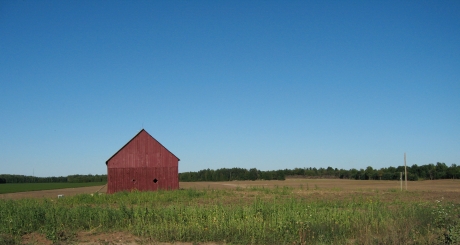
It isn’t alone…
“Rideau Fire”, the hulking brick house on First Line has gone to make way for yet another housing development. Monster homes for people who want “the country life” living cheek-by-jowl with their neighbours.


In May, 2005, I was lucky enough to have gone out to take photos of the old Pappas summer resort cottages.



"Keep Out"
They were torn down 5 days later.
Fading Ad Blog
June 22, 2009
Here is a link I meant to pass along when I posted the first time about the painted wall ads. It is called the Fading Ad Blog. Check it out!
It is part of the Fading Ad Campaign. Check it out, as well.
468 Bank Street
June 9, 2009
In researching some of the painted wall advertisements, here in Ottawa, I came across one I hadn’t seen before.
It was apparently revealed when the flagship Tommy and Lefevbre burned down, earlier this year. It was fragmented from earlier demolitions, it seems, and so only parts of the original painting was visible. What was visible was very well preserved.
Today, I headed down to the spot to take my own photos of the wall. It was gone.
MikeyG. who posts his amazing photos on Flickr had taken possibly the only photos of the piece which is now lost to history.
He very graciously sent me a copy so I could post it, here.
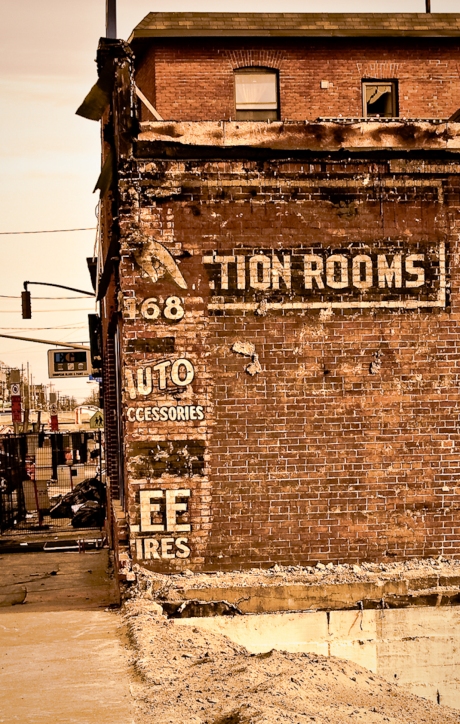
468 Bank, Spring 2009
Unfortunately, I have so far been unable to find the names of the businesses advertised. The horizontal one appears to be for auction rooms. There were a number in Ottawa, though I couldn’t find any mention of one on Bank Street.
The “auto accessories”, likewise, I was unable to come up with a corresponding business. If I am not mistaken, there is a building around the corner on Flora or Arlington which was a fairly big auto repair business dating back to the 1920s. I wonder if they are related?
I looked through the city directories between 1901 and 1923, available online, and while the 1923 directory is the first to list the address, it is noted as “vacant”. I may have to go to the library and see if they have the directories for the next few years.
My thanks to MikeyG. for allowing me to include his photo.
Imperial Theatre
June 9, 2009
The Imperial Theatre was built in 1914. It closed in 1955 and was eventually reopened as Barrymore’s, a music venue.
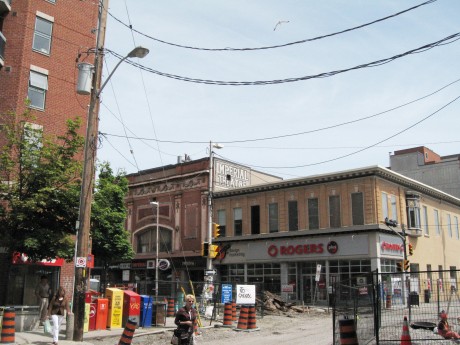
The former Imperial Theatre, now Barrymore’s, Bank and Gilmour
Interestingly, The Imperial and other Ottawa theatres appear to have ignored the “Lord’s Day Act” as late as 1950 and incurred the wrath of the chairman of the Motion Picture Censorship and Theatres Inspection Branch. He wrote the Ottawa theatre owners:
“the theatres in your city have been used [on Sundays] more than any others in Ontario and in most cases you have ignored our arrangement with the Lord’s Day Alliance of Canada. You are all familiar with the requirements. They are quite simple. You write me for certain forms which are to be completed twenty-one days prior to any performance, and they must be completed in full…From this date should any of your theatres be opened on Sunday for any event, without the necessary forms being completed, I shall ask the Provincial Secretary to deal with the matter” *
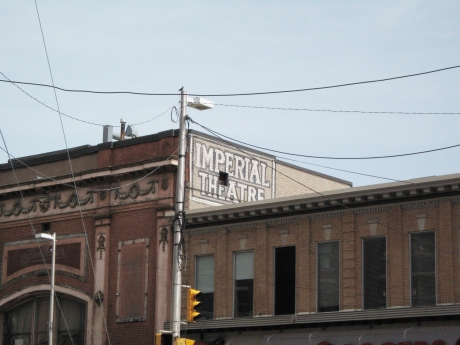
Imperial Theatre sign
This one was a smash and grab as I was illegally parked in a dodgy spot, left the car running while I dashed to the corner, and the parking authority guy was writing a ticket on someone a few feet away. But I managed to get the photos I wanted and not get a ticket or the car stolen!
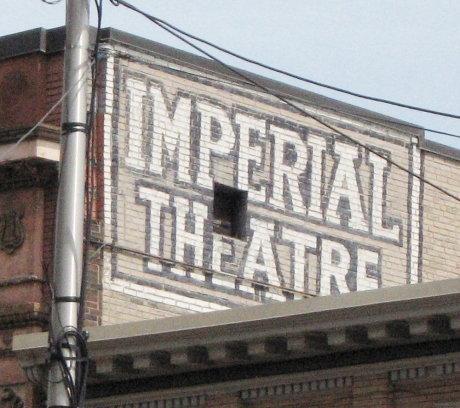
Detail of the sign
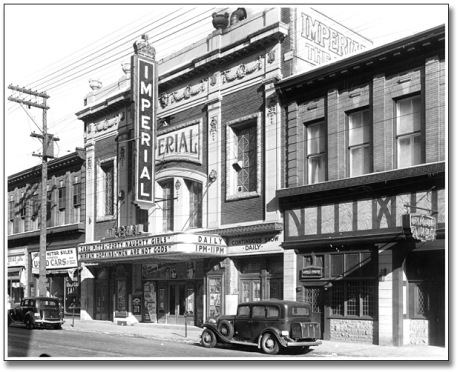
Imperial Theatre, circa 1937*
In case you are interested, the theatre was showing “Forty Naughty Girls” with Zazu Pitts (1937) and “Men Are not Gods” with Miriam Hopkins, Gertrude Lawrence, Sebastian Shaw, and Rex Harrison (1936).
As run down as Barrymore’s is, I am thankful that because it was purchased and the facade kept more or less intact, we still have one existing old theatre in Ottawa. One of the great tragedies is that the wonderful Capital Theatre which opened in 1930. with 2580-seats and was originally and Loews theater. It was the largest movie theater ever built in Ottawa. It was torn down in the 1970 and replaced with a forgettable office tower and a cineplex, now gone, as well.
For more on classic theatres, check the Cinema Treasures website (it appears to be down at the moment. I hope this is temporary!).
* Archives of Ontario
G.A. Snider ~ Photographer
June 9, 2009
I don’t know much about G.A. Snider. There are a number of fonds at the National Archives of Canada which contain examples of his work. His shop was at 134 Bank Street and then at 123. He lived, I believe, on Rideau Terrace, in New Edinburgh. The rest of the photos can be seen here.
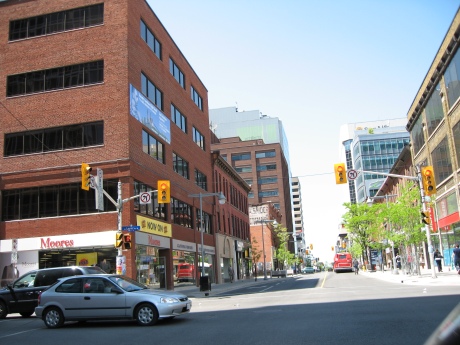
Bank and Laurier Streets
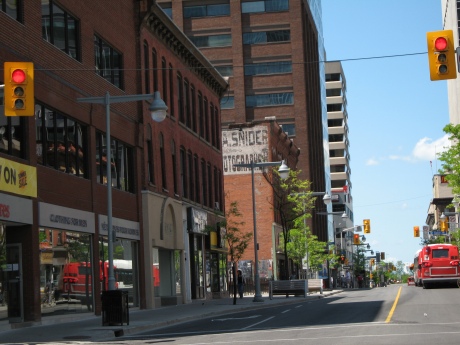
Sign visible half way up the block
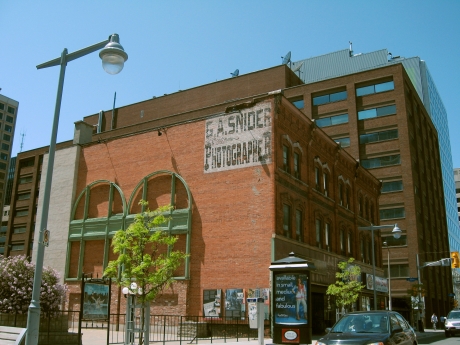
G.A. Snider ~ Photographer
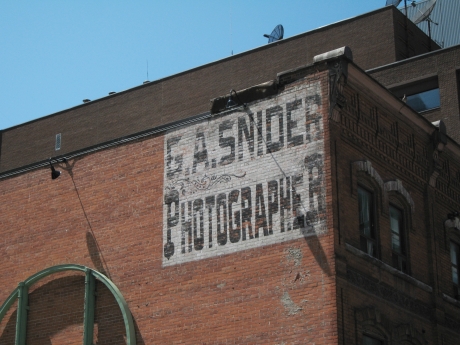
I like the juxtaposition of the 100+ year old sign and the satellite dishes!
Westboro Wall
June 8, 2009
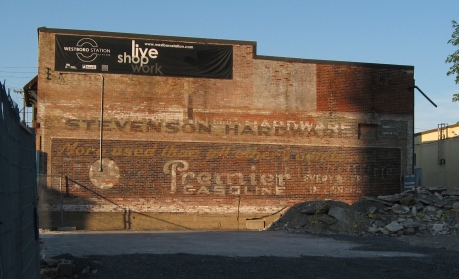
Westboro Wall, circa 1927
This wall was revealed when a neighbouring building was torn down. For many years it was only visible from an alley between the two buildings. That’s why I never saw it before.
Unfortunately, the building upon which it is painted is slated for demolition. The whole Westboro neighbourhood which has long been a quiet one with trendy shops is now busy, with more and more high-end trendy shops going in. Like many such neighbourhoods, it is falling victim to its own charm and many of the charming old buildings are being torn down and replaced by swank condominiums and expensive shops.
The sign has advertisements for Imperial Premier Gasoline and Stevenson Hardware. Stevenson Hardware had advertisements in the 1927 “History of Westboro”.
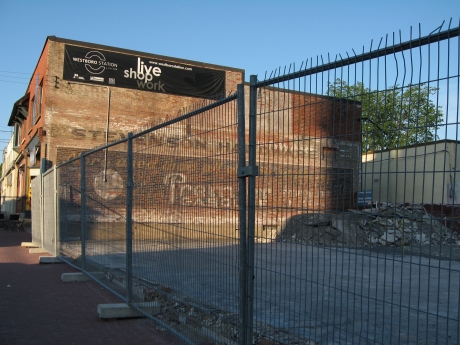
Westboro Wall
Blackburn Bros., Mica Manufacturing, 200 Crichton Street
October 29, 2008
The lot remained vacant for a good many years until a condominium building was built there. For a good many years, however, you would find chunks of mica lying about, between lumps of dog poo and broken bottles.
While New Edinburgh is now a quiet residential neighbourhood, it was once a thriving industrial and business area, as well as the home of those working in the area. Rocklciffe Village, to the north, which is now the home of mansions and embassies was once the home of those who were in service to the rich who lived in Sandy Hill and other areas of the city, as well as government and clerical workers.
Along the Rideau River which flows just two blocks away, from Crichton Street were heavy industry, chemical manufacturers, sawmills and other water-powered mills (located both at the Rideau Falls, where the Rideau plunges into the Ottawa River, but further upstream where Cummings Bridge crosses the Rideau at Montreal Road), rail-yards for both train and streetcars, foundries, amongst others.


200 Crichton Street

It has been used since prehistoric times (as a pigment for cave paintings) and in windows before the it was discovered how to create glass in sheets. At the Pyramid of the Sun at Teotihuacan, near Mexico City, contained considerable amounts of locally mined mica in layers up to 12 inches thick. It continues to be used by the Hindus during Holi, in the pigments thrown during the festivities.

